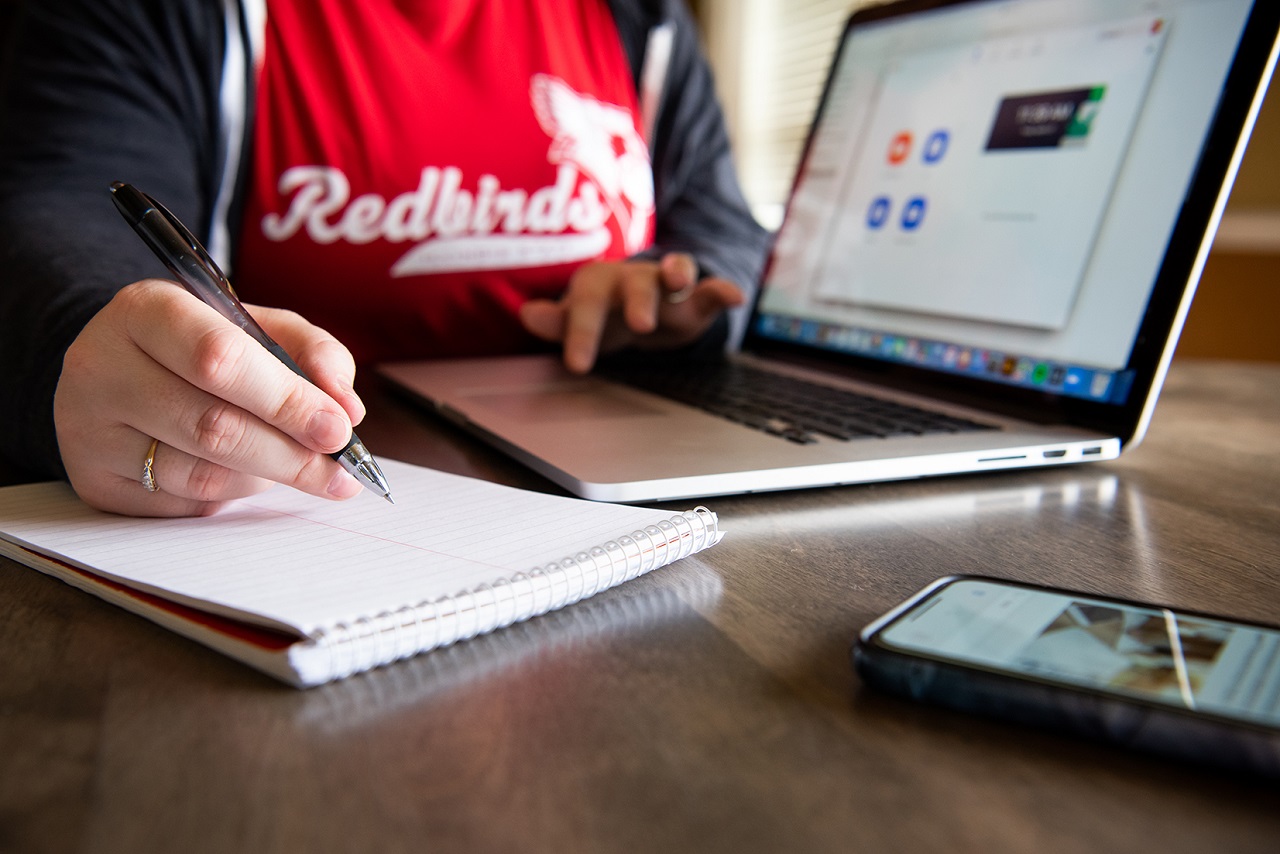Working at home can be a pain, literally.
That’s what some have found in the first few weeks. Shoulders ache, backs hurt, and what’s with that afternoon slump? It’s not the couch or kitchen table that’s to blame, and thankfully the problem is an easy fix.
“Bodies crave movement of any kind,” said Health Promotion and Wellness Director Nikki Brauer ’90, M.S. 93. “You have to move. We are not in our normal work spaces where we have different types of support. The longer we’re in a constrained posture, the more we’re going to ache.”
She advised taking 10 to 15 second movement breaks every 15 minutes. A few stretches or yoga poses will make a difference. And change locations throughout the day. Working from the couch, a recliner, bed, or standing at the kitchen counter all count. If you are standing, she recommends buying an anti-fatigue mat and wearing shoes. They reduce physical strain by adding stability for feet, knees, hips, and spine.
While sitting, try using a rolled-up towel or pillow in the curve of your lower back. By keeping the back straight, you aren’t as likely to lean forward, putting pressure on your neck, hands, wrists, and forearms.
If you’re using a laptop, place some books under it so that your chin is level while looking at the screen. Open the laptop a little further to lengthen your neck. If your screen top is at a 90-degree angle, you’re going to be curving downward. Looking down causes neck and back strain and could eventually lead to bulging disks.
“Your eyes and your hands drive your posture,” Brauer said. She uses an adjustable laptop table on wheels. The movable desk allows her to switch between sitting and standing.
Brauer offers free virtual ergonomics consultations, which you can schedule online. More suggestions on how to work comfortably at home are at Wellness.IllinoisState.edu/living/stress. Look under “Ergonomic guidance while doing remote work and virtual coursework.”
Anne Schmidt, M.S. ’02, reached out to Brauer for a virtual consultation after developing shoulder pain her first week at home. The instructional assistant professor teaches algebra and pre-calculus on Zoom, with nearly 160 students in one class. Without her whiteboard, she has to work math problems on a touchpad using a digital stylus.
She was working at her kitchen table in front of her laptop with the touchpad off to the right. Brauer suggested propping the laptop up to create a space to slide the touchpad underneath. Having both in front of her solved the problem. She also started changing locations.
“Varying rooms was helpful,” Schmidt said. “I wouldn’t have naturally thought of that. It also helped me mentally not being in the same spot all the time.” One place that’s off limits is the sofa, which she reserves for “me time.”
“When I go there, I get my mind away for a little bit,” said Schmidt, who is grateful her shoulder pain is gone. She now makes it a routine to interrupt her work with a quick activity. “Sometimes I put on some music and do a dance break,” she said. “I think music separates us from what’s going on in the world.”

